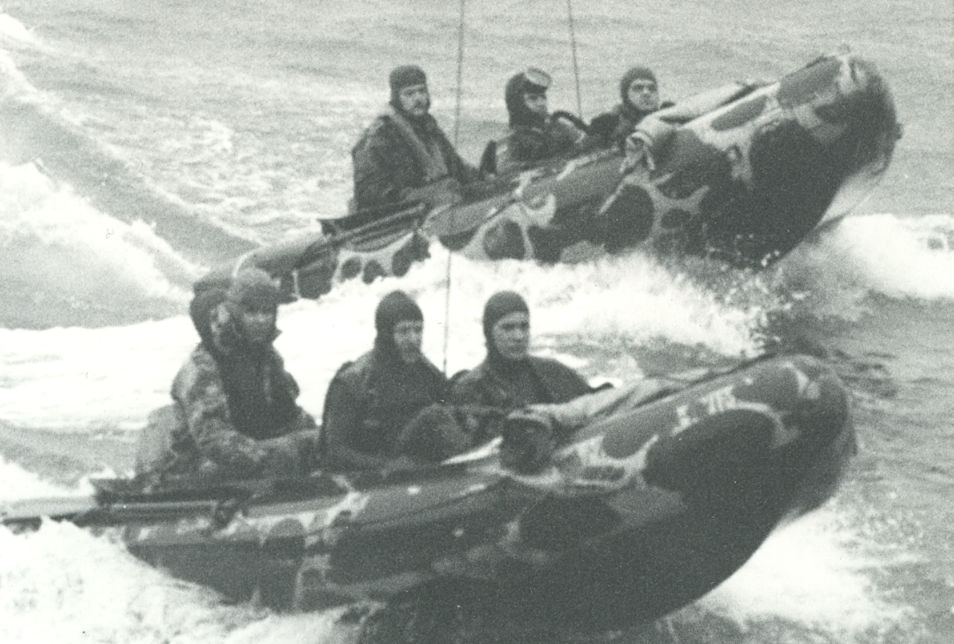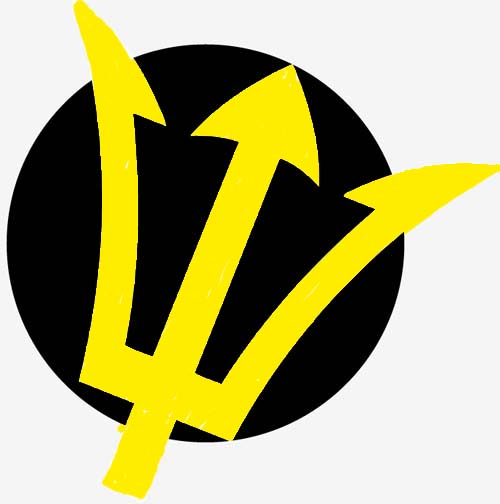
Die 1970er Jahre
The 1970s would be a decade marked by terrorism, and this would have great significance for the Kampfschwimmer Company.
On 5 September 1972, eight members of the Palestinian terrorist organization Black September entered the Olympic Village in Munich. They took eleven hostages. All hostages died during the course of a rescue attempt by the Bavarian police. Three of the terrorists survived and were taken into custody. On 26 September 1972, just 21 days after the events in Munich, the second German special operations force was founded: Grenzschutzgruppe 9 (Border Security Forces Group 9), abbreviated as GSG9. [The paramilitary Border Security Forces are an arm of the German Interior Ministry. They are classified as a federal law enforcement agency. Therefore GSG9 is authorized to operate domestically, while the Kampfschwimmer and other military units are prohibited from conducting armed missions on German soil.]
Some time after GSG9 was formed a BGS delegation, including the unit’s first commander, BGS Lt. Col. Ulrich Wegener, visited the Kampfschwimmer Company for orientation. They enquired about missions, equipment and tactics. Wegener wanted to include a maritime component in GSG9. The Kampfschwimmer Company provided significant support for the development of GSG9’s amphibious platoon. Ever since, GSG9 sends members to the Kampfschwimmer training center in Eckernförde every year to receive tactical dive training. At least once a year GSG9 and the Kampfschwimmer Company conduct a joint anti-terrorism exercise on the water. The administrative basis for this cooperation was laid in 1980 when the Interior Minister and the Defense Minister agreed that their respective ministries would provide one another with training and materiel support.
Another event would provide a significant impetus to the naval commando unit’s development. The German fleet commander spent an entire day visiting the Kampfschwimmer Company to get a complete picture of their capabilities (NATO had requested information from the German navy regarding the Kampfschwimmers’ operational capabilities). As a result, the German naval commandos began to participate more intensively in NATO exercises. Frequent training partners were the Danish, British and French counterparts. Increasingly, the Kampfschwimmer also participated in joint training with the US Army’s 10th Special Force Group stationed in Bad Tölz in southern Germany, and especially with the US Navy SEALs, who maintained a detachment on Crete.
The Germans profited greatly from the Americans’ experience in combined land operations, i.e. approaching from the sea or per river in order to conduct operations on land, as was practiced in Vietnam. The first SEALs visited Eckernförde/Carlshöhe in 1973. One of these was Pete Wikul who retired from active duty in 2009 as a Navy Captain. The SEALs, for their part, were most interested on training for tactical underwater operations, which they had neglected during the Vietnam War. The US naval commandos were very impressed by the German LAR II rebreather system produced by Dräger. As a result both SEAL teams were equipped with the device. A Personnel Exchange Program with SEAL Team 2 was initiated In 1975. It is still in effect today. In addition, SEAL Teams and Special Boat Teams visit Eckernförde at least once a year.
Needing more space, the Company relocated from the Carlshöhe Kaserne into the 1960’s era Eckernförde-Nord Kaserne on 1 October 1974. In their new building the Company was able to add a training platoon, while the command section added a physician and a parachute rigger. With this reorganization the company became fully responsible for training new naval commandos. This was facilitated by the construction of a new indoor dive-training facility which enabled co-location of the entire unit and its functions at one base. The mission was also redefined and clarified to include: commando operations against ships, docks, harbor facilities, locks, etc., when tactically significant for the Navy; beach reconnaissance, including inland reconnaissance; special combat operations above and below water and on land.
The 1970s were a decade of reorientation for the Company. Mastering land combat techniques set the stage for a new, more active role within the German Navy’s operational planning. The Kampfschwimmer were designated as an “instrument of naval warfare”; in that capacity they were to receive offensive missions. The mission profile, organization and capabilities were modified to meet the demands of modern Special Operations Forces. The fleet had finally taken note of the Kampfschwimmer, who were now to be employed as an offensive naval arm. The Comany was assigned wartime targets in case of an East-West confrontation. For the most part these targets were located on the territory of the former GDR (German Democratic Republic or “East Germany”). The Kampfschwimmer were tasked with missions which required on-the-spot assessment by the operators (otherwise a fighter-bomber could have achieved the same results). The designated targets lay up to 30 kilometers inland, which had to be traversed covertly.








